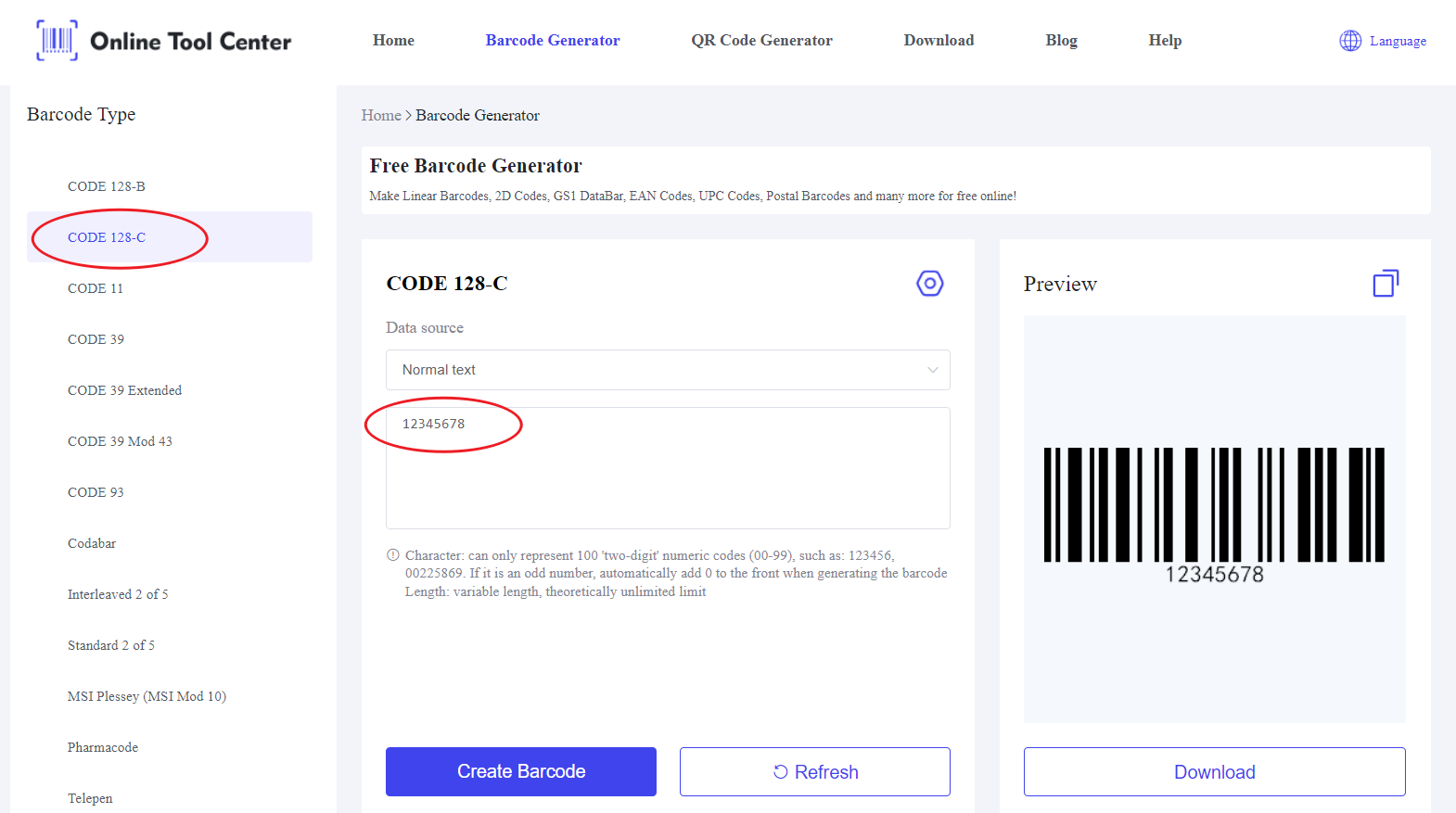Barcodes play a role in modern data management, particularly in industries where tracking and managing large volumes of data is critical.
Among the various barcode symbologies, Code 128 C stands out as a specialized version designed for efficiently encoding numeric data. This article will provide an expert overview of Code 128 C, exploring its structure, benefits, and real-world applications.
What is Code 128 C?
Code 128 C is a subset of the broader Code 128 barcode standard, which is widely used across industries for its versatility and data density.
Code 128 C is specifically optimized for numeric data, encoding pairs of digits (00-99) into single barcode characters.
This ability to represent two digits in one character allows Code 128 C to produce highly compact barcodes, which is a significant advantage in environments where space and readability are crucial.
Code 128 C uses a combination of 106 different symbols, each representing different pairs of digits. These symbols are carefully designed to ensure that barcodes are both compact and easy for scanners to read, even in fast-paced environments like retail checkouts or warehouse management systems.
The Technical Structure of Code 128 C
Understanding the technical structure of Code 128 C helps clarify its efficiency and reliability. The barcode starts with a start character (Start C), followed by encoded data characters, an optional check character (checksum), and a stop character. Here's a breakdown of each component:
● Start Character: This marks the beginning of the barcode and tells the scanner that the barcode is encoded in Code 128 C.
● Data Characters: Each pair of digits is encoded into one character, significantly reducing the barcode's length.
● Checksum: A modulo 103 checksum is often included to enhance error detection, ensuring data integrity during scanning.
● Stop Character: This indicates the end of the barcode, signaling to the scanner that the barcode is complete.
What is the Difference Between Code 128 and Code 128 C?
Code 128 is a flexible barcode symbology capable of encoding the entire ASCII character set, including letters, digits, and control characters. It is divided into three subsets:
1. Code 128 A: Encodes uppercase letters, numbers, and control characters.
2. Code 128 B: Encodes both uppercase and lowercase letters, numbers, and special characters.
3. Code 128 C: Focuses solely on numeric data, encoding pairs of digits.
The key difference between Code 128 C and other variants is its ability to compress numeric data. While Code 128 A and Code 128 B are versatile, they require more space to encode the same amount of numeric data because they use one character per digit.
Code 128 C, on the other hand, uses one character for every two digits, making it ideal for applications where space is limited but numeric data must be stored.
Benefits of Using Code 128 C
1. High Data Density: Code 128 C offers one of the highest data densities among barcode symbologies, making it possible to encode large amounts of numeric data in a small space.
2. Compact and Efficient: By encoding two digits per character, Code 128 C creates shorter barcodes, which are easier to print, scan, and store.
3. Enhanced Scanning Accuracy: The compact nature of Code 128 C reduces the likelihood of scanning errors, ensuring quick and reliable data capture.
4. Cost-Effective: Shorter barcodes mean less ink and smaller labels, reducing overall printing costs, especially in high-volume applications.
Usages of Code 128 C
Code 128 C is widely used in industries where numeric data plays a central role. Some of its most common applications include:
● Logistics and Shipping: In logistics, Code 128 C barcodes are used to encode shipping numbers, tracking IDs, and container numbers. The compact barcode format ensures that these numbers can be printed on small labels or directly on packages without taking up much space.
● Retail: Retailers use Code 128 C to manage inventory, track product numbers, and encode pricing information. The barcode's efficiency in handling numeric data helps streamline point-of-sale operations and inventory management.
● Healthcare: In the medical field, Code 128 C is used to encode patient IDs, medical record numbers, and lab results. The ability to accurately and efficiently encode this data helps maintain the integrity of patient records.
How to Create Code 128 C Barcodes?
An online barcode generator can make it easy to create professional-grade barcodes tailored to your specific needs.
To generate a Code 128 C barcode:
1. Input Numeric Data: Enter the numeric data that you want to encode. Since Code 128 C only handles numbers, ensure that your data consists of numeric pairs.

2. Generate the Barcode: Use the barcode generator to create the barcode. The generator will automatically apply the correct encoding, including the start, data, checksum (if applicable), and stop characters.
3. Download or Print: Once generated, the barcode can be downloaded as an image or directly printed onto labels or documents. This flexibility allows you to integrate the barcode into your existing workflows seamlessly.
To put it concisely, Code 128 C is an efficient and powerful barcode symbology for encoding numeric data. Its ability to compress data into a compact and highly readable format makes it invaluable in industries where space, accuracy, and speed are critical.
To create Code 128 C barcodes easily, consider using an online barcode generator. This tool simplifies the process, allowing you to generate accurate and professional barcodes tailored to your specific needs, ensuring efficiency and accuracy in your operations.





